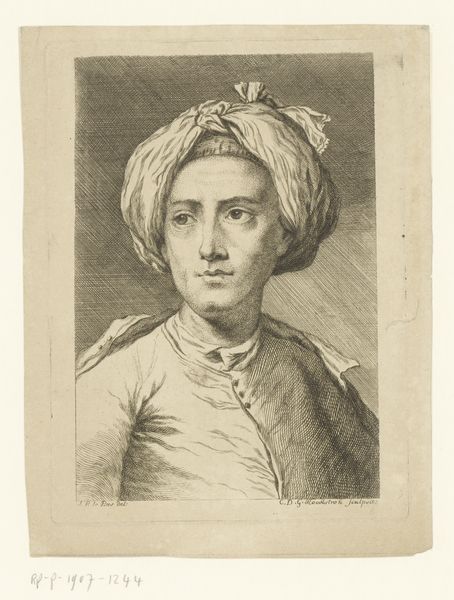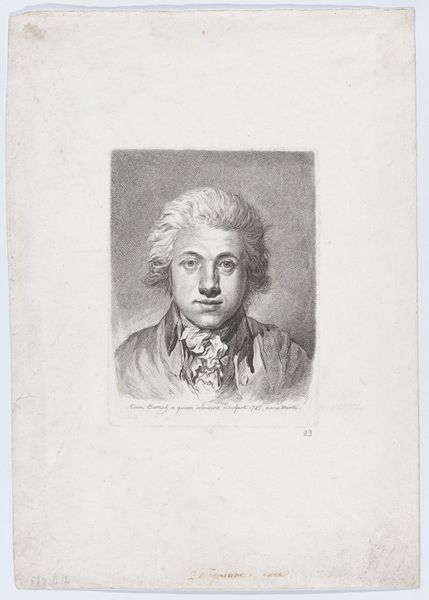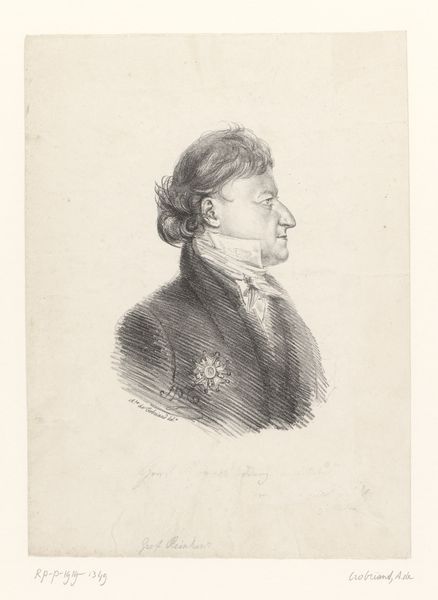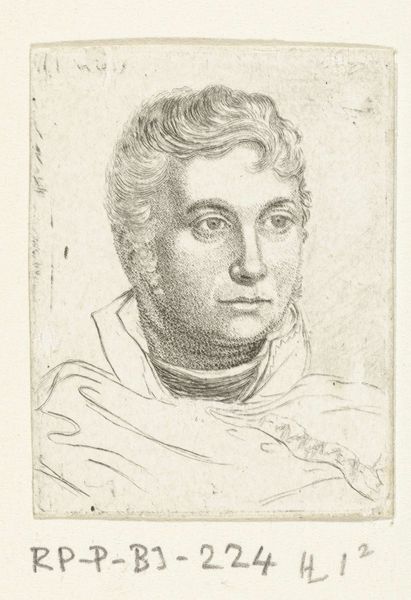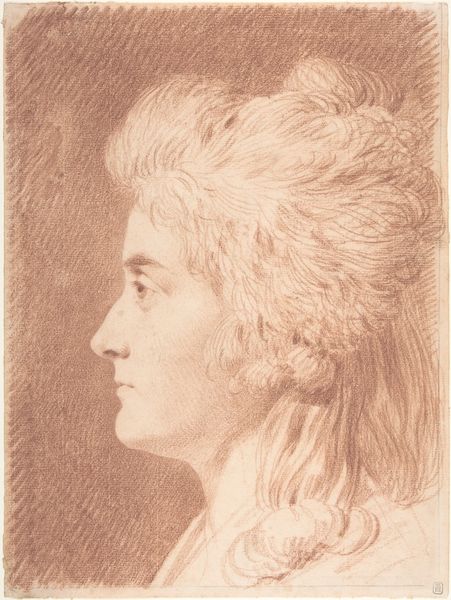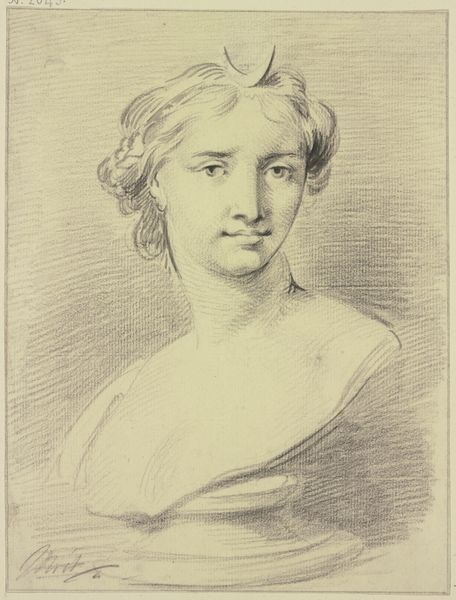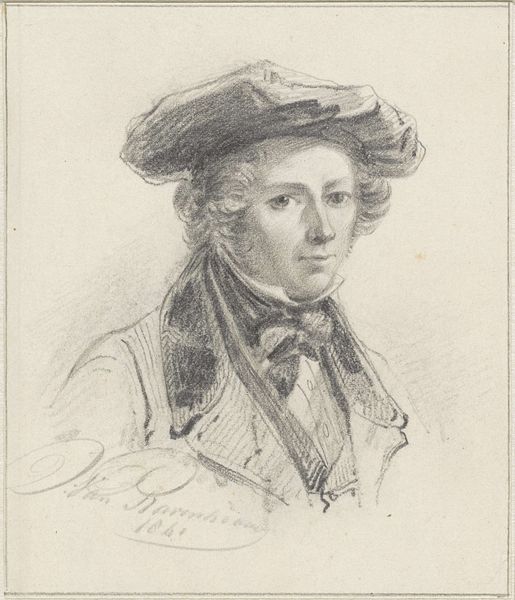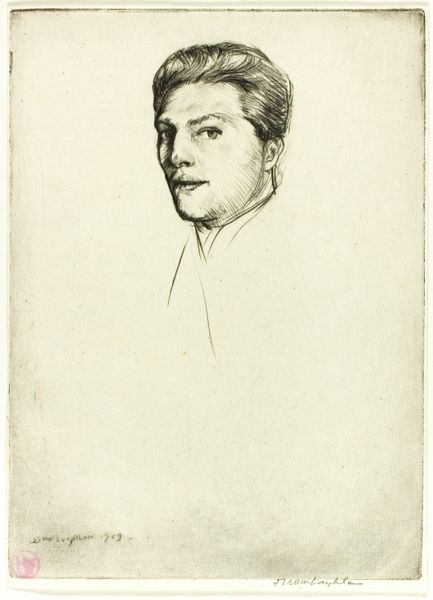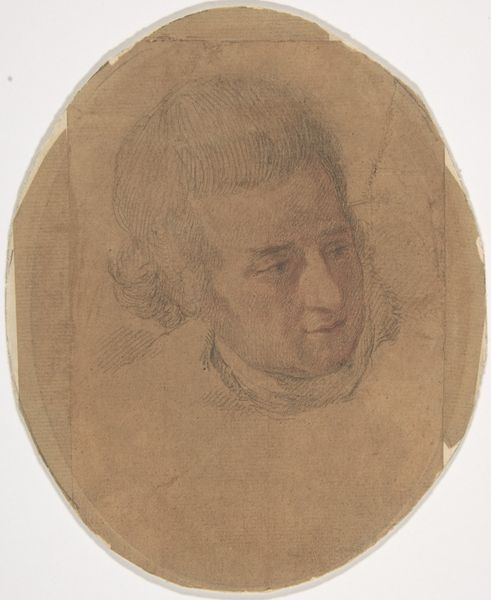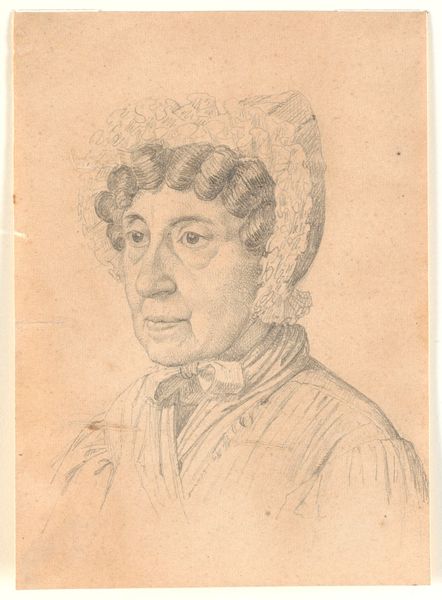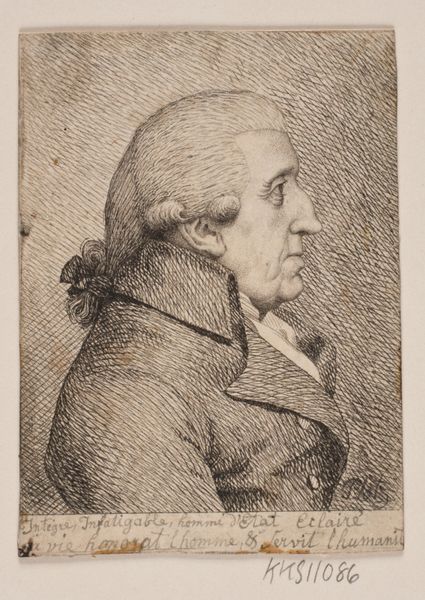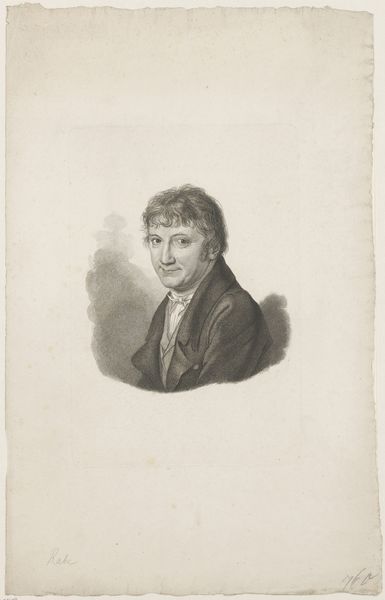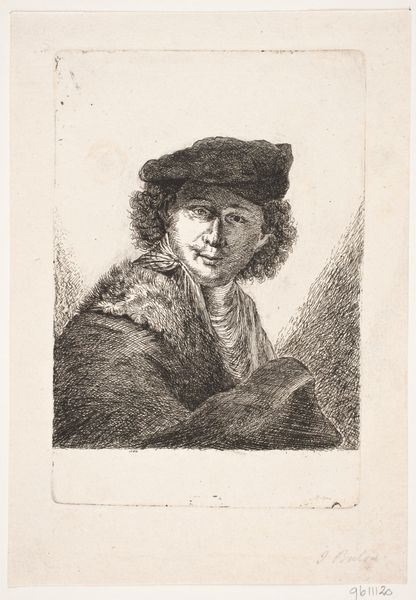
drawing, print, paper, pencil, graphite
#
portrait
#
drawing
# print
#
paper
#
pencil drawing
#
pencil
#
graphite
#
realism
Dimensions: 187 × 146 mm
Copyright: Public Domain
Curator: Look at this intriguing drawing, a piece called "Bust of Man in Hat," dating back to the 19th century, held here at the Art Institute of Chicago, crafted using pencil and graphite on paper, attributed to Johann Elias Ridinger. Editor: Ah, there's something disarming in the subject's expression, a gentle smirk playing on his lips that pulls you right in. I find that engaging, rather cheeky maybe, how unassuming he seems. The subtle variations in tone elevate what would have been an ordinary image into something pretty engaging. Curator: His attire and, as the title implies, the hat – tell a particular story, especially in contrast with that slight smile you point out. During that era, specific hats held coded significance related to societal class and status, professions. Even personal eccentricities! His specific type is fairly generic for this timeframe but does have the tassle on its side, not widely found during this era. I also love to interpret this individual through a psychological framework of the era too, as one might assess someone from their dress, overall affect, as much as from what they say or what one knows about them socially. This hat creates a cultural touchstone for interpreting the time and emotional and mental state for this individual. Editor: Absolutely, there's a whole performance embedded, right? Like theatre. You read not just him but also the implied viewer into it, trying to deduce his place within it. He isn’t aristocratic; there’s none of that severity that official portraiture tried to evoke. More relaxed. The lack of bold contrast from graphite makes the piece very approachable, like something sketched quickly in passing in some busy market square. It's very immediate! Curator: Yet that careful realism points us to deeper truths as well. Drawing's stark contrast and directness lend themselves well to authenticity and, especially at that time, objectivity. In a pre-photographic era, there were other reasons than artistic flair to creating these! How interesting is that? Editor: That puts it in great perspective. It allows me to understand how portraiture during the era functioned and what a huge role they actually served for the public, even for what was once seen as quotidian. You just taught me a lot. Thank you! Curator: The pleasure was all mine. Looking through these objects reveals stories, which, layer by layer, show us ways of experiencing life through history. Editor: Now when I see this I will remember that smile as holding a million possible experiences, each waiting to leap from the image itself!
Comments
No comments
Be the first to comment and join the conversation on the ultimate creative platform.
